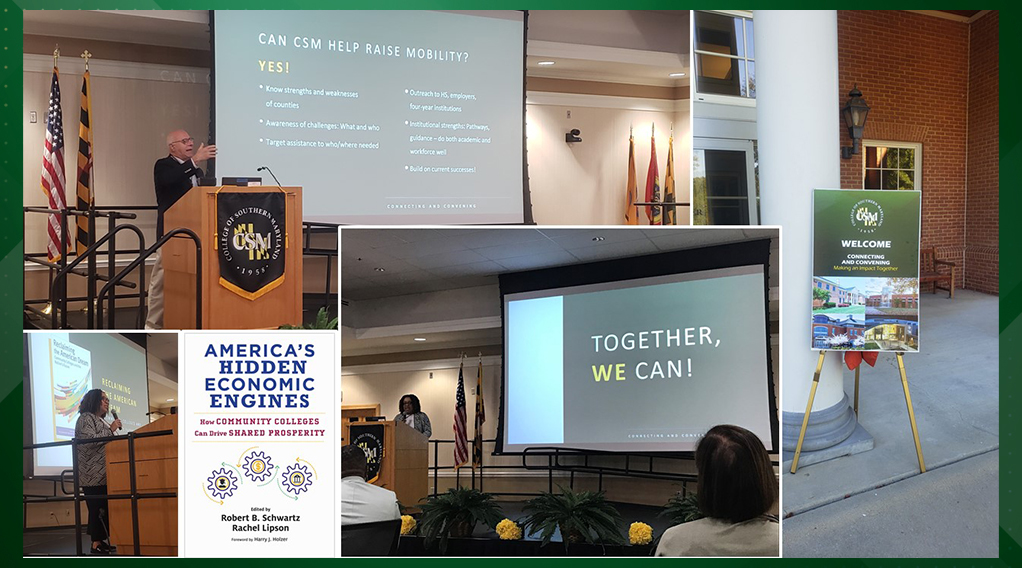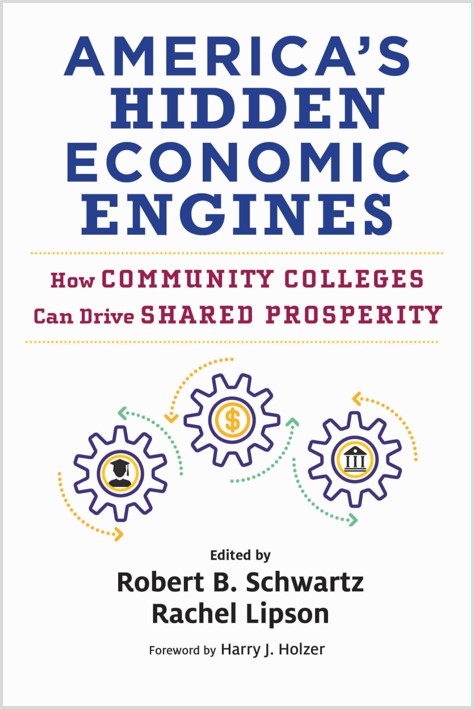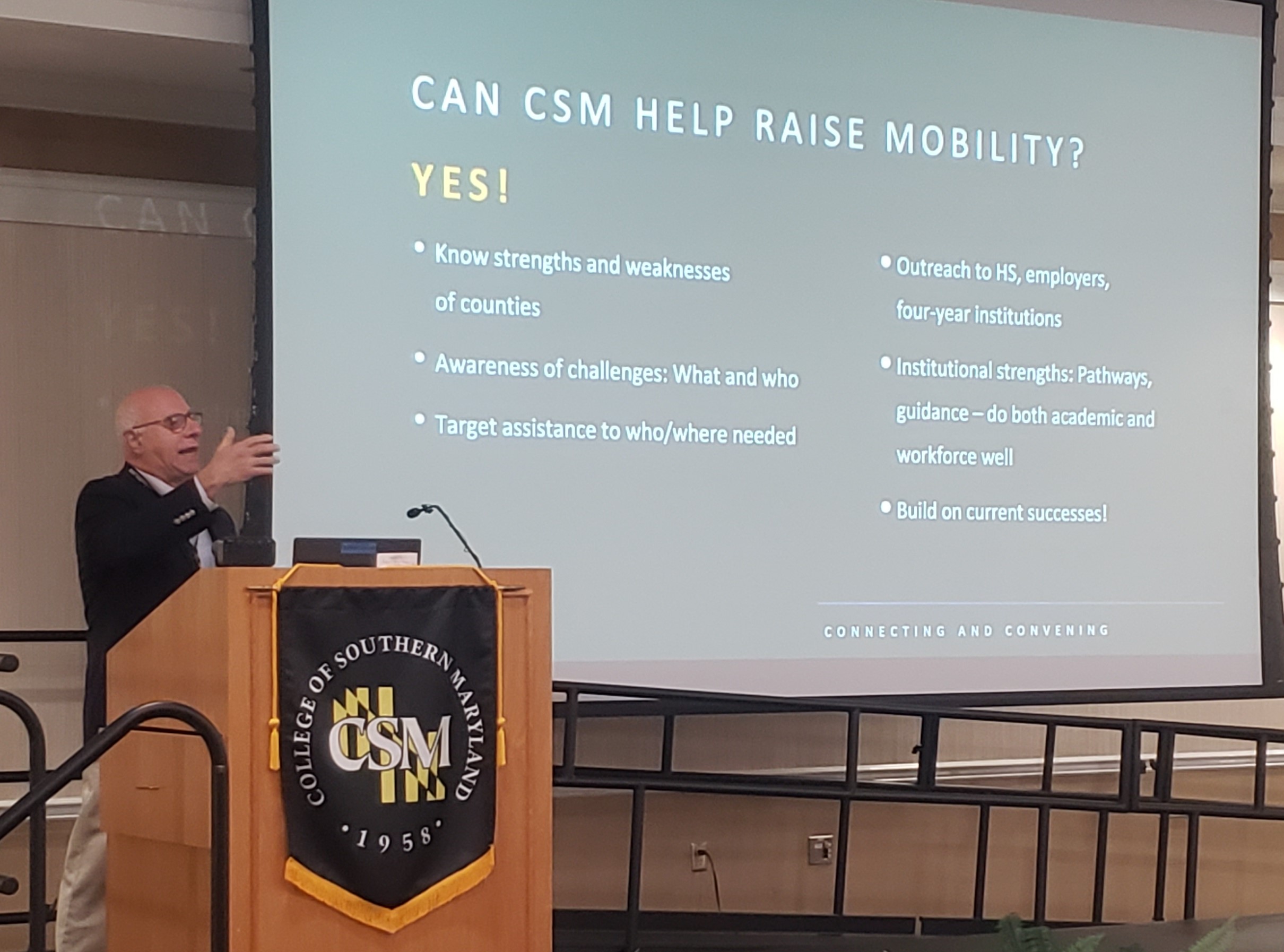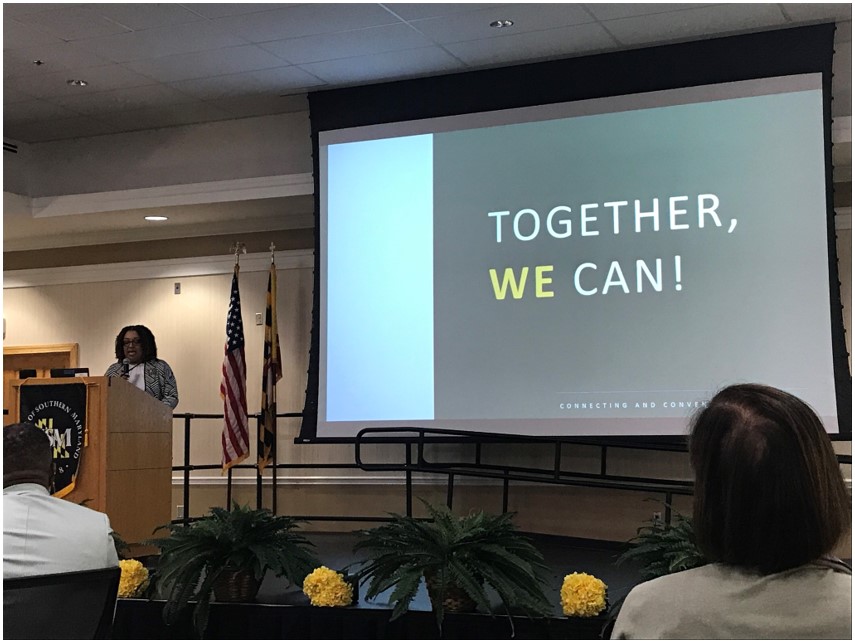Community Convening Strengthens Partnerships, Highlights CSM’s Role as Region’s Economic Engine

“Community colleges are the critical pipeline for both young talent, and talent of all ages, into the industries of the present, and industries of the future.”
The College of Southern Maryland (CSM) recently held a community convening at its La Plata Campus with more than 90 of Southern Maryland’s top business, government, military and nonprofit leaders and influencers to strengthen partnerships and collectively focus on improving upward social and economic mobility for students and local residents. Chief among the key outcomes of the “Connecting and Convening: Making an Impact Together” conference, was a better understanding that community colleges are more than learning institutions – they are regional economic engines.
“As we consider the ultimate goal of improving the social and economic mobility of our students, we recognize that we cannot do this work alone,” CSM President Dr. Yolanda Wilson told the attendees. “CSM plays a critical role in our community because we are the hub in the wheel – the connector and convener of our valued partners. We are steadfast in our work so that our students can ‘live, train, and remain’ in our communities.”
Wilson explained that community colleges have been centering their work around student access, momentum and mobility for more than 75 years when the Truman Commission Report identified ways to increase access to higher education and made recommendations that would put higher education within reach of millions of underserved students. Those recommendations included reframing junior colleges as community colleges with an emphasis on serving communities, increasing the number of community colleges, and making tuition free or low-cost. The original charge in 1947 is not at all different from what the charge is today: To make social and economic mobility accessible for those populations who are disconnected from higher education.
“Today, we will build a deeper understanding of the economic eco-systems in which we operate in Southern Maryland, recognizing not just the degrees and credentials we bring to our communities, but really thinking through what the market needs and wants ... not just now ... but in the future,” Wilson said – adding that feedback from the day’s conversations would contribute to the college’s next strategic plan. “And building pathways for economic prosperity begins with not only understanding our labor market, but even more, understanding the needs and the opportunities that exist within our region.”
 During the convening, attendees heard from many experts and contributors to a book entitled: America’s Hidden Economic Engines: How Community Colleges Can Drive Shared Prosperity which highlights five community colleges who have had tremendous success partnering with governments, employers, and their communities in the area of economic and workforce development.
During the convening, attendees heard from many experts and contributors to a book entitled: America’s Hidden Economic Engines: How Community Colleges Can Drive Shared Prosperity which highlights five community colleges who have had tremendous success partnering with governments, employers, and their communities in the area of economic and workforce development.
Among those experts was Harry Holzer, who wrote the forward of the book and is professor of Public Policy at Georgetown University; a Senior Fellow at the Brookings Institute; and a former chief economist for the U.S. Department of Labor.
Holzer first defined mobility.
“Economic mobility involves people making progress over time,” he said. “In other words, are they improving their status? For students growing up in low-income families, they need economic mobility – or upward mobility – in order to try to get some piece of the American Dream of which maybe their families have been denied, so far.”
Holzer also explained the different measures of mobility. There is absolute mobility where a person’s financial success is compared to their parents and there is relative mobility when a person’s success is compared to their peers. He confirmed the harsh reality that the rate of upward income mobility continues to decline for children – and has been declining for some time – diminishing the expectation that subsequent generations will be more economically secure than their parents.
“But if we want everyone to thrive, and to have equal opportunity, even those who are less fortunate and  grew up in families and communities with fewer resources, upward mobility is the key goal for achieving that,” he said.
grew up in families and communities with fewer resources, upward mobility is the key goal for achieving that,” he said.
To make his point, Holzer shared economic data disaggregated by race, gender and age – as well as by zip code – within Charles, Calvert, and St. Mary’s County – the three counties served by CSM – to point out where more resources and support are needed.
Achieving the Dream Chief Learning Officer Susan Mayer also presented to explain social mobility – which “encompass dimensions such as improved and equitable health care, increased civic engagement, and simply feeling valued because of the increased sense of dignity and belonging that comes from contributing to one’s community.”
“Community colleges are the economic engines of their communities and of the regions of which they reside,” added Rachel Lipson. Lipson co-edited America’s Hidden Economic Engines and moderated a panel of community college leaders featured in the book for their innovative collaborations between their colleges and community to enhance their college’s position as a critical workforce partner. Lipson is the co-founding director of the Project on Workforce at Harvard University’s Malcolm Wiener Center for Social Policy. She is also a senior policy advisor at the U.S. Department of Commerce in the CHIPS Program Office.
“[Community colleges] are the critical pipeline for both young talent, and talent of all ages, into the industries of the present, and industries of the future,” Lipson said. “[Community colleges] are the ones talking to businesses; building pipelines into good jobs; and preparing people for the future of work.
“For students, that means if you are looking for jobs in your community, the community college is the place for you to look at as a number stop.” she continued. “And for businesses, if you are looking for a diverse pipeline of workers who are from your community and who are likely to stay in the community, then the community college is where you can find a unique source of talent for the jobs today and tomorrow.”
Joining Lipson on the panel were Vice Chancellor of Workforce Development and Innovation Dr. Ian Roark, from Pima Community College in Arizona; Vice President of Strategy, Research and Workforce Innovation for Northern Virginia Community College Steven Partridge; Vice President of Enrollment Management and Student Services at Ohio’s Lorain County Community College Dr. Marisa Vernon-White; and Dr. Chad Knights, vice president, information and engineering technologies and college computing at Northern Virginia Community College. The panelists represented three of the five community colleges featured as case studies in the book America’s Hidden Economic Engines.
Among the conference attendees were leaders from the Military Alliance, the NAACP, The Patuxent Partnership, Leadership Southern Maryland, numerous nonprofits, area school systems, St. Mary’s College of Maryland, the University of Maryland at Southern Maryland, CalvertHealth, MedStar St. Mary’s Hospital, University of Maryland Charles Regional Medical Center, economic development and community resource directors, top military leaders from Naval Air Systems Command, Naval Air Warfare Center Aircraft Division, and Naval Surface Warfare Center Indian Head Division – as well as CSM faculty and staff.
Following lunch, participants broke into county-focused sessions and brainstormed on ways to work together to unify a vision in support of Southern Maryland and create impactful change in social and economic mobility for the region.
Wilson explained further that as CSM is wrapping up its current strategic plan and beginning the process of looking ahead – the college intends to move forward collectively to vision for the region’s future.
 “We want to build success together with all of you by engaging in conversations that will inform our new strategic plan with student access, momentum and mobility at the core of our efforts,” Wilson said. “These types of conversations, along with our CSM internal focus groups, and faculty, staff, and student input, will contribute greatly to CSM’s new strategic plan and we are grateful to every single participant for lending their expertise and voice to our convening’s important discussions.”
“We want to build success together with all of you by engaging in conversations that will inform our new strategic plan with student access, momentum and mobility at the core of our efforts,” Wilson said. “These types of conversations, along with our CSM internal focus groups, and faculty, staff, and student input, will contribute greatly to CSM’s new strategic plan and we are grateful to every single participant for lending their expertise and voice to our convening’s important discussions.”
 my.CSMD
my.CSMD